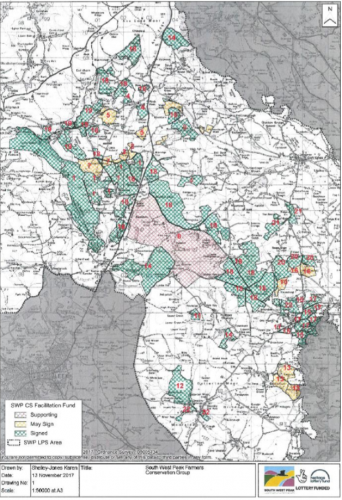Ref: CSFF050006
Lead: Jeff Simms, j.sim@staffs-wildlife.org.uk
Group members: 14
Length of agreement: 3
Area of group (Hectares): 2414
The group’s collective landholding falls within The South West Peak National Character Area (NCA 53). Group members have worked together to identify the following Countryside Stewardship priorities they will be delivering as follows:
1) Biodiversity – Members will share knowledge, maintain, restore, link and create the following priority habitats; – blanket bog; – upland fens, flushes and swamps; – hay meadows – purple moor grass and rush pasture; – upland heath. – woodland planting to buffer and link existing woodlands within priority woodland habitat networks. The group will also focus on activities to help priority breeding wader assemblage.
2) Water – reduce sediment from soil erosion and runoff. – reduce the amount and rate of surface water run-off; – slow the movement of floodwaters from the headwaters.
3) Landscape – Understand the importance of stone walls, hedgerows, bankside trees as landscape features; Research and record the value of traditional barns and farmsteads
4) Historic environment – Work to restore and protect archaeological features by removing scrub and bracken
5) Synergies – Management of low-intensity wet rush pasture in the catchments of the Goyt, Churnet, Manifold and Dane in locations will benefit breeding waders, water quality, flood risk and biodiversity.
Restoring blanket bog, wet heath and upland mire habitats using moorland re-wetting options and seasonal livestock exclusion within South Pennines Moors SPA will benefit flood risk, carbon storage, water quality and biodiversity. choosing options to diversify the moorland fringe including: moorland management, enclosed rough grazing, management of rough grazing for birds and low-input grassland options where these will benefit landscape character, water quality and biodiversity.

